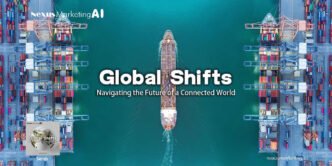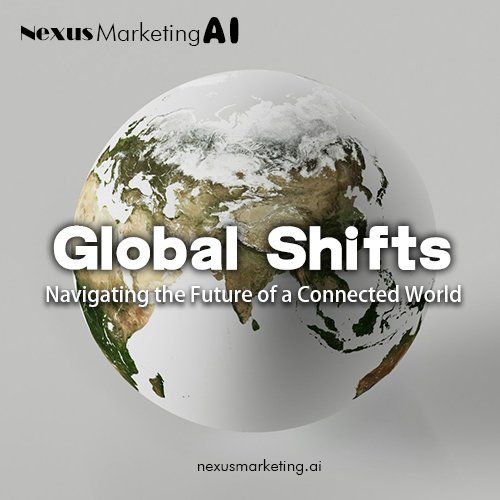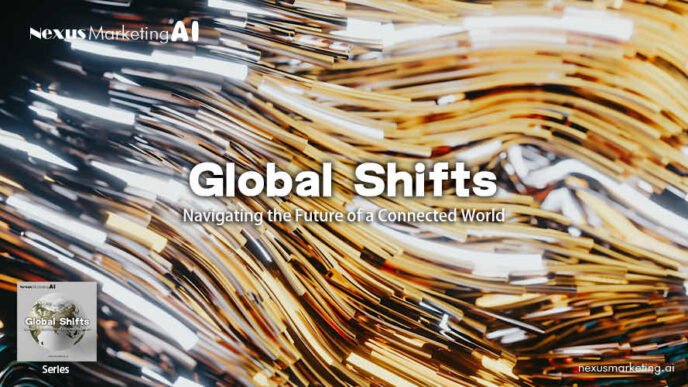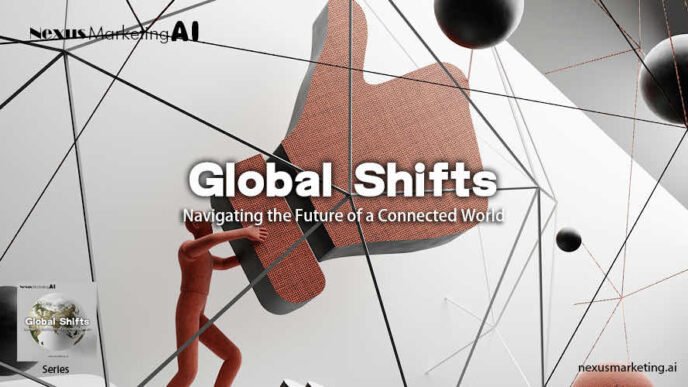Discover the challenges and opportunities in global supply chains, examining how businesses navigate complexities to drive growth and resilience.
Global Shifts
Navigating the Future of a Connected World
As the world becomes more interconnected, the forces driving globalization have far-reaching impacts on economies, businesses, and societies. This series dives deep into the core elements shaping today’s global landscape, from technological innovation and economic integration to cultural exchange and environmental sustainability.
Through a comprehensive exploration of these topics, “Global Shifts” offers thought-provoking insights into how businesses can adapt to this rapidly changing environment. Whether you’re a leader aiming to stay ahead of global trends or a professional seeking to understand the shifting dynamics of global trade, this series provides the essential knowledge to navigate the future of globalization.
Series
- Episode1.Globalization 101: Understanding the Basics
- Episode2.Economic Globalization: Trade and Investment Flows
- Episode3.Technological Globalization: The Role of Digitalization
- Episode4.Cultural Globalization: Cross-cultural Exchange and Influence
- Episode5.Political Globalization: Global Governance and Multilateralism
- Episode6.Sustainability in Globalization: Environmental Impact and Solutions
- Episode7.Global Supply Chains: Challenges and Opportunities
- Episode8.The Future of Globalization: Trends and Predictions
- Episode9.Challenges of Globalization: Inequality and Social Impacts
- Episode10.Globalization and Innovation: How Companies Stay Competitive
Table of Contents

Prefer to listen? Enjoy the audio version of this article
Curated audio version | Audio powered by AI
The Role of Global Supply Chains in the Global Economy
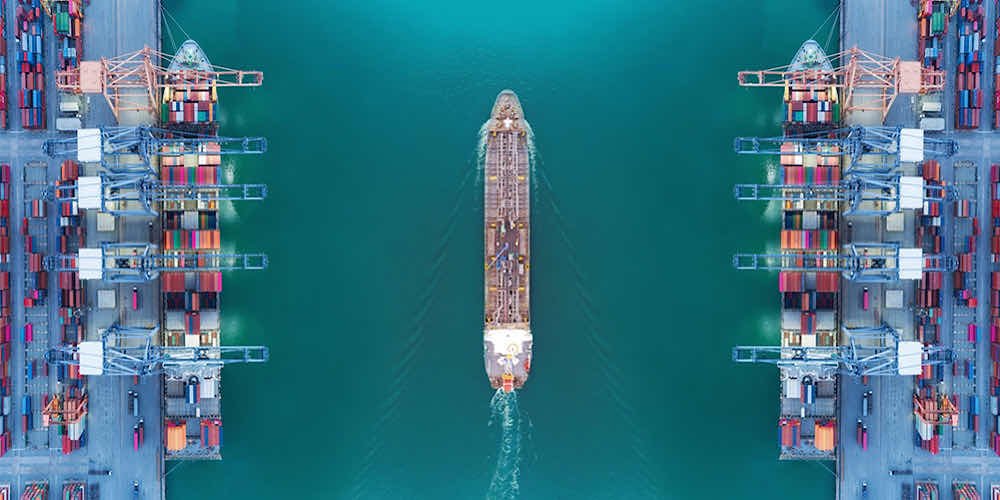
Global supply chains are the backbone of the modern global economy, enabling the production, distribution, and consumption of goods and services across borders. They connect businesses, industries, and markets from different parts of the world, allowing companies to source materials, manufacture products, and deliver goods to consumers efficiently and cost-effectively. The interconnected nature of global supply chains has been a driving force behind economic growth, trade expansion, and technological advancement.

Overview of Global Supply Chains
A global supply chain involves the movement of products and services through various stages, from sourcing raw materials to manufacturing, distribution, and retail. It often spans multiple countries, with different stages of production and assembly taking place in locations where labor, resources, or technology offer a competitive advantage. For example, an automobile may have parts manufactured in Japan, assembled in Germany, and sold in the United States. The complexity of these supply chains highlights the interdependence of global economies.
While global supply chains have contributed to efficiency and cost savings, they are also vulnerable to disruptions. Natural disasters, geopolitical tensions, and global pandemics can halt production, delay shipments, and impact the availability of goods. As the global economy becomes more interconnected, the management of supply chains has become more critical than ever, requiring companies to balance efficiency with resilience.
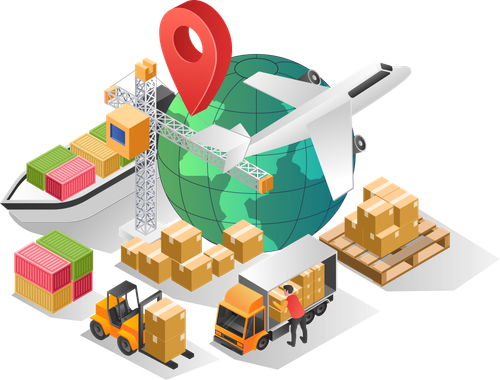
The Evolution of Supply Chains in a Globalized World
Over the past few decades, supply chains have evolved from localized networks to complex, globally integrated systems. Advances in technology, transportation, and communication have enabled businesses to optimize their operations by sourcing materials and labor from different parts of the world. This evolution has allowed companies to reduce production costs, access new markets, and deliver products to consumers more quickly.
The rise of digital technologies, such as e-commerce platforms, cloud-based supply chain management tools, and artificial intelligence (AI), has further transformed supply chain operations. These technologies have enhanced visibility, allowing companies to track inventory, shipments, and demand in real time. However, as supply chains have become more global and interconnected, they have also become more exposed to risks, from natural disasters to geopolitical instability.
Key Challenges Facing Global Supply Chains

As global supply chains have grown more complex and interconnected, they have also become increasingly vulnerable to a range of challenges. These challenges threaten the efficiency, reliability, and sustainability of supply chains, making it essential for businesses to adapt and develop more resilient strategies.

Geopolitical Instability and Trade Wars
Geopolitical tensions and trade disputes can severely disrupt global supply chains. For instance, trade wars between major economies like the United States and China have led to increased tariffs, regulatory barriers, and uncertainty for businesses reliant on cross-border trade. The uncertainty created by such tensions forces companies to reassess their supply chain strategies, including diversifying their suppliers and relocating production facilities to more politically stable regions.
Geopolitical instability, such as conflicts in key resource-rich areas, also poses risks to supply chains. For example, political instability in oil-producing regions can lead to fluctuations in energy prices, which in turn impacts transportation and production costs across supply chains. In a globalized world, where industries are interconnected and dependent on resources from diverse regions, maintaining stability is crucial for keeping supply chains intact.

Supply Chain Disruptions from Pandemics
The COVID-19 pandemic exposed the vulnerability of global supply chains to health crises. The pandemic caused widespread disruptions, including factory shutdowns, shipping delays, and labor shortages, leading to significant delays in the production and distribution of goods. Industries reliant on just-in-time (JIT) inventory systems—where goods are produced and delivered as needed—were particularly affected by the breakdown in logistics and production schedules.
In response to these disruptions, businesses began reevaluating their supply chain models, seeking to build greater resilience. Many companies have shifted to more flexible supply chain strategies, such as increasing inventory buffers and diversifying suppliers to reduce dependence on any single region or source. The pandemic underscored the importance of building supply chains that can withstand unexpected shocks while maintaining efficiency.

Environmental and Sustainability Pressures
As consumers and regulators increasingly prioritize environmental sustainability, global supply chains are under pressure to reduce their environmental footprint. Transportation and logistics are major contributors to greenhouse gas emissions, and industries that rely on extensive supply chains are being held accountable for their environmental impact. Additionally, unsustainable practices, such as deforestation and overexploitation of natural resources, have raised concerns about the long-term viability of certain supply chain models.
Governments and consumers alike are pushing for greener supply chains that minimize waste, reduce carbon emissions, and adopt sustainable sourcing practices. For example, many companies are shifting to renewable energy sources for manufacturing, exploring circular economy models that recycle materials, and optimizing transportation routes to reduce fuel consumption. Adapting to these environmental challenges is not only essential for sustainability but also for meeting the evolving expectations of consumers and stakeholders.
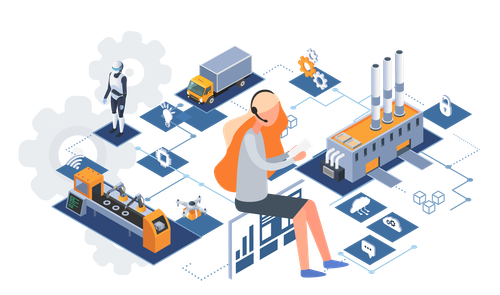
Technological Disruptions: Automation and Digitalization
The rapid advancement of technology is reshaping global supply chains, offering both opportunities and challenges. Automation, artificial intelligence, and blockchain are transforming how goods are produced, tracked, and delivered. Automation has increased efficiency in manufacturing and warehousing, reducing labor costs and speeding up production times. However, the adoption of these technologies also raises concerns about job displacement and the need for upskilling workers to manage automated systems.
Digitalization, including the use of AI and data analytics, provides real-time visibility into supply chain operations, enabling companies to anticipate disruptions, optimize routes, and manage inventory more effectively. Blockchain technology is also being used to enhance transparency and traceability in supply chains, especially in industries such as food and pharmaceuticals, where tracking the origin and movement of products is critical.
While these technologies promise to revolutionize supply chains, they also require significant investment and infrastructure upgrades. Companies that fail to adapt to the digitalization of supply chains risk falling behind in an increasingly competitive and fast-paced global market.
Opportunities for Building Resilient and Sustainable Supply Chains

Despite the challenges that global supply chains face, there are significant opportunities for companies to strengthen and future-proof their supply chains. By embracing innovative strategies and technologies, businesses can build more resilient, sustainable, and agile supply chains that can withstand disruptions and meet evolving consumer demands.

Localization and Regionalization of Supply Chains
One emerging trend in supply chain management is the shift toward localization and regionalization. Rather than relying heavily on distant suppliers, many companies are moving toward sourcing materials and producing goods closer to their end markets. This reduces the risk of disruption from long-distance transportation and geopolitical tensions, while also improving response times to market demand.
Regionalization allows companies to create more flexible and adaptable supply chains. For example, companies in Europe are increasingly sourcing components from within the region to reduce reliance on imports from Asia. Similarly, North American businesses are looking to Mexico and Canada as alternative suppliers, taking advantage of trade agreements such as the United States-Mexico-Canada Agreement (USMCA). This trend not only strengthens supply chains but also promotes local economies and reduces transportation-related carbon emissions.
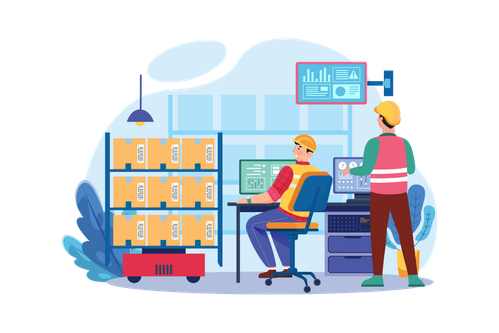
Integration of Digital Tools for Supply Chain Management
The integration of digital tools and technologies is key to improving supply chain efficiency, transparency, and resilience. Supply chain management software, powered by artificial intelligence and data analytics, allows companies to gain real-time insights into their operations. These tools can predict demand, optimize inventory levels, and track shipments, helping companies make more informed decisions.
Digitalization also enhances supply chain visibility, allowing businesses to track the movement of goods from the supplier to the end customer. This level of transparency is particularly valuable in industries such as pharmaceuticals and food, where safety and authenticity are critical. For instance, blockchain technology can be used to create tamper-proof records of transactions and product movements, ensuring that goods are sourced and produced ethically and sustainably.
The rise of the Internet of Things (IoT) is further transforming supply chains by enabling real-time tracking of assets and inventory through connected devices. IoT sensors can monitor environmental conditions, such as temperature and humidity, during transportation, ensuring that sensitive goods like perishable foods and pharmaceuticals remain in optimal conditions. By integrating these digital tools, companies can create smarter, more adaptive supply chains that respond dynamically to challenges.

Green Supply Chains and Environmental Responsibility
In response to growing environmental concerns, companies are increasingly focusing on building green supply chains that minimize their environmental impact. This involves reducing carbon emissions, adopting renewable energy sources, and optimizing resource use throughout the supply chain. Green supply chains also emphasize ethical sourcing, ensuring that materials are obtained in a way that is environmentally sustainable and socially responsible.
For instance, many companies are adopting the principles of the circular economy, where products are designed to be reused, repaired, or recycled. By extending the lifecycle of products and materials, businesses can reduce waste and decrease the demand for new raw materials. Companies like IKEA and Patagonia are leading the way in circular supply chains, designing products that can be easily disassembled and recycled.
In addition to environmental benefits, green supply chains can enhance brand reputation and appeal to eco-conscious consumers. Many consumers today are willing to pay a premium for products that are sustainably sourced and produced, and companies that prioritize sustainability are better positioned to capture this growing market segment.
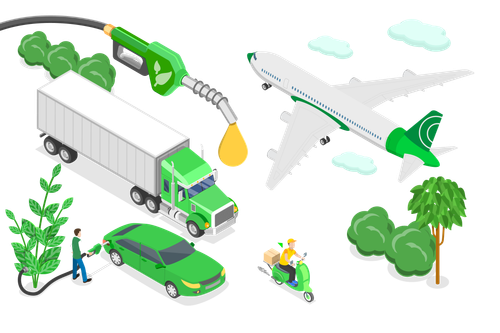
Collaboration and Strategic Partnerships
Collaboration is key to building resilient and sustainable supply chains. Companies are increasingly forming strategic partnerships with suppliers, logistics providers, and even competitors to enhance supply chain efficiency and mitigate risks. Collaborative relationships allow for better communication, shared resources, and coordinated responses to disruptions.
For example, during the COVID-19 pandemic, many companies partnered with logistics providers to ensure the timely delivery of goods despite supply chain disruptions. Some industries, such as automotive and electronics, have also adopted collaborative planning models, where manufacturers and suppliers work closely together to optimize production schedules and inventory levels.
Partnerships with non-governmental organizations (NGOs) and sustainability advocates can also help companies align their supply chains with environmental and social responsibility goals. By working together, companies and their partners can develop innovative solutions to complex challenges and create supply chains that are not only resilient but also contribute to the broader goal of sustainable development.
The Impact of E-commerce and Changing Consumer Expectations

E-commerce has dramatically transformed global supply chains, reshaping how goods are produced, stored, and delivered. At the same time, evolving consumer expectations, particularly around transparency, sustainability, and speed, are forcing companies to rethink their supply chain strategies. Meeting these demands while maintaining efficiency presents both challenges and opportunities for businesses operating in the global market.
The Rise of E-commerce and Direct-to-Consumer Models
The rapid growth of e-commerce has fundamentally altered the way supply chains function. Online shopping platforms like Amazon, Alibaba, and Shopify have enabled companies to sell directly to consumers, bypassing traditional retail channels. This direct-to-consumer (D2C) model allows brands to control the entire customer experience, from product development to delivery, but it also requires highly efficient and responsive supply chains.
E-commerce-driven supply chains must be capable of handling a high volume of smaller, more frequent shipments, as opposed to the bulk deliveries typical of traditional retail. This shift has increased demand for faster order fulfillment, real-time inventory tracking, and last-mile delivery solutions. Companies are investing in advanced warehouse management systems, automated fulfillment centers, and drone or robotic delivery systems to meet these new demands.
Additionally, the D2C model requires closer integration between supply chain operations and customer service. Companies must ensure that orders are delivered accurately and on time while providing consumers with up-to-date information on the status of their deliveries. As e-commerce continues to grow, the ability to offer fast, reliable, and personalized service will be a key differentiator for businesses.

Consumer Demand for Transparency and Sustainability
Today’s consumers are more informed and environmentally conscious than ever before. They expect greater transparency from companies about the origins of the products they buy, the working conditions of those involved in production, and the environmental impact of the entire supply chain. Meeting these expectations requires companies to be transparent about their sourcing practices, labor standards, and environmental policies.
Brands are increasingly using technology to provide consumers with real-time information about the sustainability of their products. Blockchain, for example, allows companies to trace the journey of goods from raw materials to finished products, giving consumers confidence that the products they purchase are ethically sourced. Fashion brands like Everlane have built their reputations on supply chain transparency, providing customers with detailed information on the factories where their clothing is made.
Sustainability is also becoming a competitive advantage. Consumers are more likely to support brands that prioritize reducing their carbon footprint, using recycled materials, and promoting fair labor practices. For companies, this means integrating sustainability into every aspect of the supply chain, from sourcing and production to packaging and delivery. Brands that fail to address these concerns risk losing market share to competitors who are more in tune with consumer expectations.

Customization and Speed in Supply Chains
As consumer preferences become more diverse and demand for personalized products grows, supply chains must become more agile and adaptable. Mass customization, where companies offer products tailored to individual consumer preferences, is increasingly popular in industries such as fashion, electronics, and consumer goods. However, offering customization at scale requires flexible manufacturing processes and real-time data management.
At the same time, consumers expect faster delivery times, especially with the rise of e-commerce. Companies like Amazon have set high standards with same-day and next-day delivery options, putting pressure on other businesses to meet similar expectations. To keep up, companies must optimize their supply chains for speed and flexibility, using advanced analytics, automation, and predictive demand forecasting to ensure timely delivery while managing costs.
Balancing speed and customization presents significant challenges for global supply chains. However, businesses that can successfully adapt to these demands will be better positioned to capture market share and build long-term customer loyalty in an increasingly competitive e-commerce landscape.
Strategies for Strengthening Global Supply Chains

In the face of numerous challenges, businesses are developing strategies to strengthen their global supply chains, ensuring they are resilient, efficient, and adaptable to changing market dynamics. By focusing on risk management, investing in technology, and fostering flexibility, companies can navigate disruptions while maintaining competitive advantage.
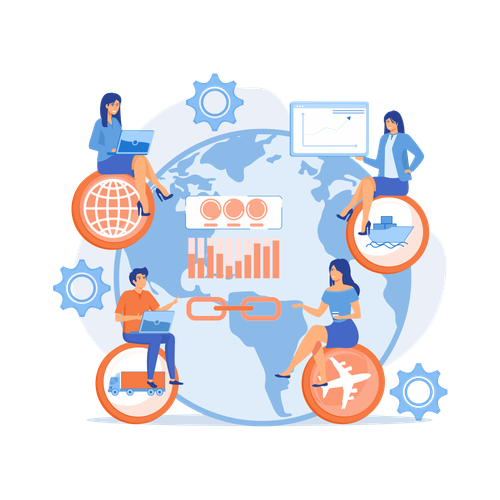
Risk Management and Supply Chain Diversification
One of the key strategies for building more resilient supply chains is diversifying suppliers and reducing dependence on a single source or region. Supply chain disruptions caused by geopolitical tensions, natural disasters, or pandemics have highlighted the risks of over-reliance on a specific country or supplier. By diversifying their supply base, companies can mitigate the impact of localized disruptions and ensure a continuous flow of goods and materials.
In addition to supplier diversification, risk management strategies include investing in tools that provide real-time visibility into supply chain operations. Companies are using advanced analytics and AI to identify potential risks early, allowing them to take preemptive action before a disruption occurs. Risk assessments are becoming more integrated into supply chain management, enabling businesses to develop contingency plans and build buffer stock where needed to minimize the impact of unforeseen events.

Investing in Technology and Innovation
Technology plays a crucial role in strengthening supply chains by improving efficiency, transparency, and responsiveness. Companies are increasingly adopting advanced technologies such as artificial intelligence (AI), blockchain, and the Internet of Things (IoT) to enhance their supply chain operations.
AI and machine learning can help companies forecast demand more accurately, optimize inventory levels, and streamline logistics. By analyzing historical data and real-time market trends, AI-driven systems can predict potential disruptions and suggest corrective actions, allowing companies to adjust their supply chain operations proactively.
Blockchain technology is revolutionizing supply chain transparency and security. By creating an immutable, decentralized ledger of transactions, blockchain allows companies to track the movement of goods and verify the authenticity of products in real time. This technology is particularly valuable in industries where traceability is critical, such as pharmaceuticals and food production.
IoT devices, such as sensors and connected machinery, provide real-time data on the location, condition, and performance of assets throughout the supply chain. For example, temperature-sensitive products like vaccines or perishable foods can be monitored during transport to ensure they remain within specified conditions, reducing the risk of spoilage and ensuring quality control.

Building Agile and Flexible Supply Chains
Agility and flexibility are essential for navigating an increasingly volatile and unpredictable global market. Agile supply chains can respond quickly to changing demand, shifting production capacity, and unexpected disruptions. To achieve this, companies are adopting more modular supply chain designs that allow them to scale production up or down and pivot to alternative suppliers as needed.
One way companies are building flexibility is by implementing multi-sourcing strategies. Instead of relying on a single supplier, businesses are forming partnerships with multiple vendors in different regions. This allows them to switch suppliers quickly if one experiences a disruption, reducing the risk of a complete supply chain breakdown.
Additionally, flexibility in manufacturing processes is key to adjusting product lines or scaling production based on demand. Companies are increasingly using technologies like 3D printing and automation to enable rapid prototyping and localized production, which reduces lead times and minimizes the risks associated with global logistics.
The Future of Global Supply Chains
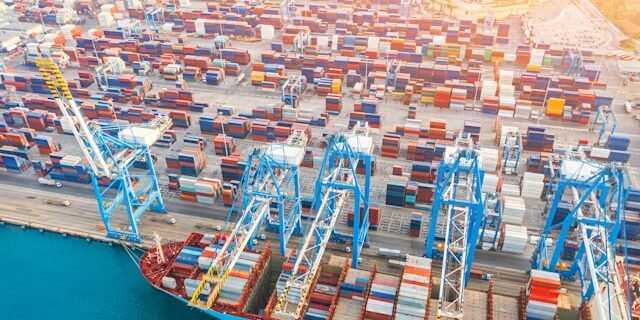
Global supply chains are at a critical juncture. As businesses continue to navigate the challenges posed by geopolitical instability, technological disruptions, and changing consumer expectations, the future of global supply chains will depend on the ability to adapt, innovate, and build resilience. Companies that successfully address these challenges by adopting sustainable practices, leveraging technology, and fostering agility will be well-positioned to thrive in the increasingly interconnected global economy.
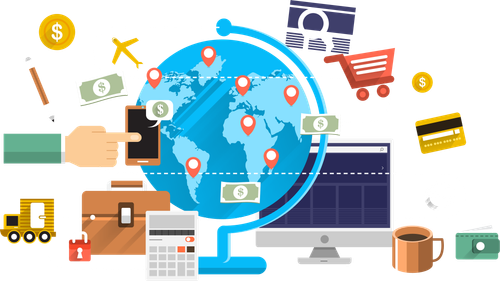
Navigating the Complexities of a Globalized Supply Chain
Global supply chains are inherently complex, involving multiple stakeholders across different geographies. As supply chains become more integrated and globalized, the potential for disruption increases. To navigate these complexities, companies must balance efficiency with risk management, ensuring that their supply chains are not only optimized for cost but also resilient to external shocks. By diversifying suppliers, investing in digital tools, and implementing flexible manufacturing strategies, businesses can reduce their exposure to risks and build more robust supply chains.

Opportunities for Innovation and Collaboration
While global supply chains face significant challenges, they also offer opportunities for innovation and collaboration. New technologies, such as AI, blockchain, and the Internet of Things, are transforming how supply chains operate, providing greater visibility, efficiency, and flexibility. At the same time, collaboration with suppliers, partners, and even competitors can create synergies that strengthen supply chains and drive sustainable growth.
By embracing these opportunities, companies can build supply chains that are not only resilient but also aligned with broader environmental and social goals. As consumer demand for sustainability grows, businesses that prioritize green supply chain practices and transparency will gain a competitive advantage in the global marketplace.

Link to Next Episode: The Future of Globalization
The next episode, “The Future of Globalization: Trends and Predictions,” will explore the evolving nature of globalization in the 21st century. With advancements in technology, shifting economic power, and changing geopolitical landscapes, this episode will examine the future direction of global trade, the role of emerging markets, and the impact of digitalization on the global economy.
FAQs
-
What are the main challenges facing global supply chains today?
Global supply chains face numerous challenges, including disruptions from geopolitical tensions, trade wars, natural disasters, and pandemics. Other issues such as fluctuating demand, rising transportation costs, and labor shortages also complicate supply chain management. These challenges can lead to delays, increased costs, and inefficiencies in the movement of goods across borders.
-
How has the COVID-19 pandemic impacted global supply chains?
The COVID-19 pandemic caused widespread disruptions in global supply chains, highlighting vulnerabilities such as over-reliance on single suppliers, limited inventory buffers, and logistical bottlenecks. Lockdowns, port closures, and reduced workforce availability severely affected manufacturing and distribution, prompting companies to rethink and diversify their supply chain strategies for greater resilience.
-
What role does technology play in enhancing global supply chain management?
Technology plays a crucial role in enhancing global supply chains by improving visibility, efficiency, and decision-making. Tools such as AI, blockchain, and IoT (Internet of Things) enable real-time tracking of goods, predictive analytics for demand forecasting, and secure data sharing across supply chain partners. These technologies help companies optimize operations, reduce risks, and respond more quickly to disruptions.
-
How do geopolitical tensions affect global supply chains?
Geopolitical tensions, such as trade wars, sanctions, and conflicts, can disrupt global supply chains by imposing tariffs, restricting access to critical materials, and forcing companies to alter their sourcing strategies. These tensions create uncertainty, increase costs, and complicate compliance with varying international regulations, making supply chains more vulnerable to disruptions.
-
What are the environmental impacts of global supply chains?
Global supply chains contribute to environmental impacts through greenhouse gas emissions, waste generation, and resource depletion. Transportation, packaging, and production processes all play a role in the environmental footprint of supply chains. Companies are increasingly focusing on sustainable supply chain practices, such as reducing carbon emissions, adopting circular economy models, and sourcing from environmentally responsible suppliers.
-
How can companies make their supply chains more sustainable?
Companies can make their supply chains more sustainable by implementing green logistics, using eco-friendly materials, and optimizing routes to reduce carbon emissions. They can also adopt sustainable sourcing practices, such as working with suppliers who adhere to environmental standards, and invest in renewable energy to power their operations. Sustainability audits and certifications can further ensure that supply chains meet environmental and ethical criteria.
-
What are the benefits of diversifying supply chains?
Diversifying supply chains helps companies mitigate risks by reducing dependence on a single supplier or region. It enhances flexibility, allows for better management of disruptions, and provides access to alternative sources of materials and components. Diversification can also lead to cost savings and improved competitiveness by allowing companies to leverage different markets and suppliers.
-
How do global supply chains impact labor standards?
Global supply chains can impact labor standards positively by creating jobs and economic opportunities, but they can also lead to labor exploitation if not properly managed. Issues such as low wages, unsafe working conditions, and child labor are prevalent in some supply chains, particularly in developing countries. Companies must enforce ethical sourcing practices, conduct audits, and work with certified suppliers to uphold fair labor standards.
-
What is the role of logistics in global supply chains?
Logistics is a critical component of global supply chains, involving the planning, execution, and management of the flow of goods from suppliers to customers. Effective logistics ensure timely delivery, cost efficiency, and inventory management. Advances in logistics technology, such as automation and robotics, are helping companies streamline operations and improve overall supply chain performance.
-
How can companies prepare for future supply chain disruptions?
To prepare for future disruptions, companies should invest in supply chain resilience by diversifying suppliers, building buffer inventories, and adopting flexible manufacturing processes. Utilizing technology for real-time monitoring, risk assessment, and contingency planning is also essential. Engaging in collaborative relationships with suppliers and logistics partners can further enhance the ability to respond to unexpected challenges.
